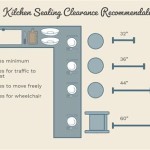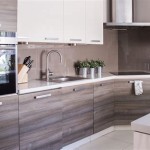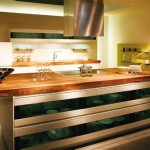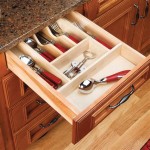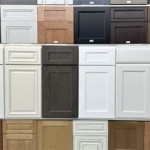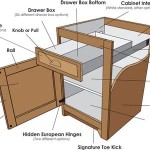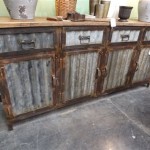Achieving a Kitchen Transformation: Cabinet Doors Contact Paper Before and After
Renovating a kitchen can be a significant undertaking, often involving considerable expense and disruption. However, for homeowners seeking a cost-effective and less invasive solution to refresh their kitchen's aesthetic, contact paper presents a viable option. Specifically, applying contact paper to cabinet doors offers a transformative before-and-after effect, capable of updating the kitchen's appearance without requiring a complete replacement of cabinetry.
Contact paper, also known as self-adhesive vinyl film, is a decorative material featuring an adhesive backing. It is available in a wide range of colors, patterns, and textures, mimicking materials such as wood, stone, and metal. This versatility makes it suitable for various design preferences, allowing homeowners to personalize their kitchens without significant investment. The application process, while requiring precision and patience, is relatively straightforward, making it accessible to individuals with basic DIY skills.
Before embarking on a cabinet door contact paper project, careful planning and preparation are essential. This includes selecting the appropriate type of contact paper, accurately measuring the cabinet doors, and thoroughly cleaning the surfaces to ensure proper adhesion. A well-executed application can result in a dramatic improvement in the kitchen's overall appearance, providing a refreshed and updated look at a fraction of the cost of traditional renovation methods.
Material Selection and Design Considerations
The selection of contact paper is a critical step in achieving a satisfactory before-and-after transformation. The market offers a diverse range of contact paper options, each possessing unique characteristics that influence its suitability for kitchen cabinet applications. Considerations should include the material's durability, ease of cleaning, resistance to moisture and heat, and aesthetic compatibility with the existing kitchen décor.
Durability is paramount, as kitchen cabinets are subjected to frequent use and exposure to potential damage from spills, cleaning products, and general wear and tear. Opting for a thicker, more resilient contact paper can extend its lifespan and maintain its aesthetic appeal over time. Scratch-resistant and waterproof varieties are particularly well-suited for kitchen environments.
Ease of cleaning is another important factor. The kitchen is a high-traffic area prone to spills and splatters. Contact paper that can be easily wiped clean with a damp cloth or mild detergent will simplify maintenance and prevent the buildup of grime. Avoid textured contact papers with intricate patterns that may trap dirt and be difficult to clean effectively.
Resistance to moisture and heat is crucial, especially for cabinets located near the sink or stove. Exposure to these elements can cause the contact paper to peel, bubble, or discolor. Choose contact paper specifically designed to withstand these conditions to ensure its longevity and prevent premature deterioration.
Aesthetic compatibility is subjective but equally important. The chosen contact paper should complement the existing kitchen décor, including the countertops, backsplash, flooring, and appliances. Consider the overall style of the kitchen – whether it is modern, traditional, rustic, or minimalist – and select contact paper that aligns with this aesthetic. Samples should be obtained and tested to visually assess the suitability of the material within the specific kitchen environment.
Beyond the material itself, pattern and color choices play a significant role. Solid colors offer a clean and contemporary look, while wood-grain patterns can add warmth and texture. Geometric designs can introduce a modern flair, while floral patterns can create a more traditional or cottage-style feel. Careful consideration should be given to the size of the kitchen and the desired level of visual impact. Smaller kitchens may benefit from lighter colors and less busy patterns, while larger kitchens can accommodate bolder choices. The impact of natural and artificial light on the color and pattern should also be evaluated.
Preparation and Application Techniques
The success of a cabinet door contact paper project hinges on thorough preparation and meticulous application techniques. A poorly prepared surface or sloppy application can result in air bubbles, wrinkles, and eventual peeling, negating the desired before-and-after transformation. Adhering to established best practices is essential for achieving a professional-looking result.
The initial step involves removing all hardware from the cabinet doors, including knobs, handles, and hinges. This allows for a smooth and unobstructed application of the contact paper. Clean the cabinet doors thoroughly with a degreasing cleaner to remove any dirt, grease, or residue. This ensures proper adhesion of the contact paper and prevents imperfections from showing through. Allow the doors to dry completely before proceeding.
Accurate measurement is crucial for minimizing waste and ensuring a seamless fit. Measure the cabinet doors carefully, adding a few extra inches to each dimension to allow for trimming. Cut the contact paper to size using a sharp utility knife or scissors. Working on a flat, clean surface, peel back a small section of the backing paper from the contact paper. Align the exposed adhesive side with the edge of the cabinet door, ensuring that it is straight and even.
Slowly peel away the remaining backing paper, smoothing the contact paper onto the cabinet door with a smoothing tool or a plastic card as you go. This helps to prevent air bubbles and wrinkles. Work from the center outwards, applying even pressure to ensure that the contact paper adheres firmly to the surface. If air bubbles do appear, use a pin to prick them and then smooth the area with the smoothing tool. For larger bubbles, carefully lift the contact paper and reapply it, smoothing out the air as you go.
Once the contact paper is applied, use a sharp utility knife to trim any excess material around the edges of the cabinet door. Ensure that the edges are clean and straight for a professional finish. Reinstall the hardware, taking care not to scratch or damage the contact paper. If necessary, use a small drill bit to create new pilot holes for the hardware screws.
For cabinet doors with recessed panels or intricate details, use a heat gun or hairdryer to gently warm the contact paper before applying it. This will make it more pliable and easier to conform to the contours of the door. Be careful not to overheat the contact paper, as this can cause it to stretch or melt.
Addressing Common Challenges and Troubleshooting
While applying contact paper to cabinet doors is a relatively straightforward DIY project, certain challenges may arise during the process. Addressing these issues effectively is essential for achieving a satisfactory before-and-after result. Common problems include air bubbles, wrinkles, peeling, and uneven adhesion.
Air bubbles are a frequent occurrence, particularly during the initial application process. As previously mentioned, small air bubbles can be easily remedied by pricking them with a pin and smoothing the area with a smoothing tool. Larger air bubbles may require lifting the contact paper and reapplying it, ensuring that air is expelled as you go. Applying even pressure and working from the center outwards can help to prevent air bubbles from forming in the first place.
Wrinkles can also be problematic, especially when working with larger surfaces or intricate designs. To minimize wrinkles, ensure that the cabinet door is clean, smooth, and free of any imperfections. Apply the contact paper slowly and carefully, paying close attention to alignment and tension. If wrinkles do occur, try gently stretching the contact paper to remove them. A heat gun or hairdryer can also be used to make the contact paper more pliable and easier to smooth out.
Peeling is a common issue that can occur over time, particularly in areas exposed to moisture or heat. To prevent peeling, ensure that the contact paper is properly adhered to the cabinet door. Use a strong adhesive primer if necessary, especially on surfaces that are prone to peeling or have a glossy finish. Avoid using harsh cleaning products that can damage the contact paper and weaken the adhesive. Periodically inspect the contact paper for signs of peeling and reapply adhesive as needed.
Uneven adhesion can occur if the cabinet door is not properly cleaned or if the contact paper is not applied evenly. Ensure that the cabinet door is thoroughly cleaned with a degreasing cleaner and allowed to dry completely before applying the contact paper. Apply even pressure and work from the center outwards to ensure that the contact paper adheres firmly to the surface. If uneven adhesion does occur, try reapplying the contact paper with more pressure or using a stronger adhesive primer.
When working with contact paper, it is essential to use sharp tools for cutting and trimming. A dull utility knife or scissors can tear or damage the contact paper, resulting in a poor finish. Replace the blades of your cutting tools frequently to ensure clean and precise cuts. Practice on scrap pieces of contact paper before tackling the actual cabinet doors to get a feel for the material and the application process.
For complex projects involving multiple cabinet doors or intricate designs, consider seeking professional assistance. A skilled DIYer or handyman can ensure a flawless application and a truly transformative before-and-after result. While professional installation may incur additional costs, it can save time, frustration, and potential mistakes, ultimately resulting in a more satisfactory outcome.

Contact Paper In The Kitchen 5 Places B4 And Afters

How To Update Cabinets With Contact Paper The Handyman S Daughter

How To Update Cabinets Using Contact Paper

Re Wrapping Kitchen Cabinets With Contact Paper Er Friendly

L Stick Wood Cabinets Er Friendly

Er Friendly Kitchen Cabinet Contact Paper Makeover Ideas

Painting Mdf Kitchen Cabinets Theril Cabinet Redo Poofy Cheeks

Spruce Up The Outside Of Your Kitchen Cabinets With Contact Paper Offbeat Home Life

Refinish Kitchen Cabinets With Kilz Max Primer

The Best Way To Paint Kitchen Cabinets No Sanding Palette Muse
Related Posts

